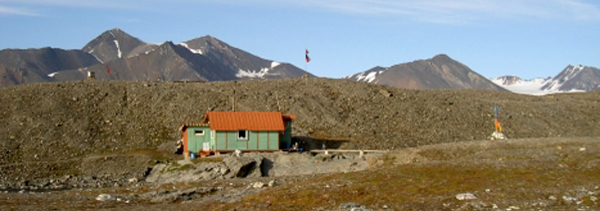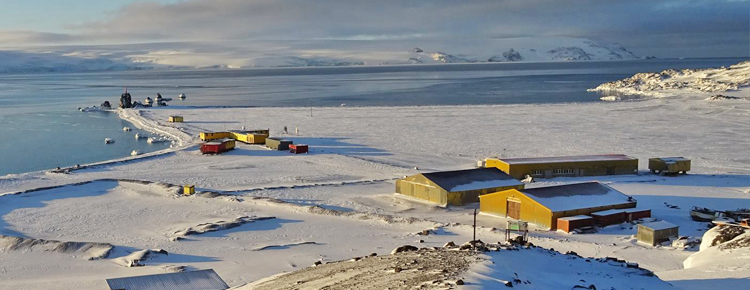
 Henryk Arctowski Polish Polar Station on King George Island (Antarctic Peninsula)
Henryk Arctowski Polish Polar Station on King George Island (Antarctic Peninsula)
The first independent Polish scientific expedition set off to the Antarctic at the end of 1975. Although it was a maritime expedition aiming to evaluate krill and fish stock in the Southern Ocean, it also landed on King George Island in the South Shetland Islands on the west side of the Antarctic Peninsula (62°09'41''56/S, 58°31'49''99/W), where a plaque commemorating this moment was set in the rock. Two years later on the same island the Antarctic Station of the Polish Academy of Sciences already existed. The Station was named after Henryk Arctowski (1871- 1958), an eminent Polish polar explorer, a member of the first scientific expedition to the Antarctic on “Belgica” ship (1897-1899). The Station officially began its activity on February 26 1977 and has been functioning unceasingly until now. Thanks to establishing the Station, Poland became the thirteenth full member of the Antarctic Treaty. ‘Arctowski’ is the only Polish Antarctic station functioning all-year-round.
Logistic and scientific care of the station is taken by the Department of Antarctic Biology, PAS, continuing the works and traditions of the Department of Polar Research of the Ecology Institute, PAS, from which it was separated together with the Antarctic Station in 1992. The Department of Antarctic Biology coordinates the southern hemisphere part of the Polish National Polar Programme set by the Polar Research Committee. Research in oceanography, geology, geomorphology, glaciology, meteorology, seismology and, most of all, ecology is conducted at the Station. The Department’s activities also comprise organizing annual expeditions and maintaining Henryk Arctowski Polish Antarctic Station.
News from the station

 Stanisław Siedlecki Polish Polar Station in Hornsund (Southern Spitsbergen)
Stanisław Siedlecki Polish Polar Station in Hornsund (Southern Spitsbergen)
Stanisław Siedlecki Polish Polar Station was created in 1957 at Polar Bear Bay (Isbjørnhamna) in Hornsund fjord (West Spitsbergen). The station is managed by Institute of Geophysics, Department of Polar and Marine Research, PAS. The station, as an international, interdisciplinary research platform for the Arctic system, took an active part in the IV International Polar Year 2007-2009.
In 2002 the European Union declared the Hornsund Fjord, together with the Polish Polar Station, one of the six flagship places on the European continent for biological and geophysical research, as a place of exceptionally small degree of modification and pollution of the environment. In December 2007 in the Staszic Palace (the seat of the Polish Academy of Sciences in Warsaw) a celebratory commemoration of the fiftieth anniversary of opening the station and giving it the name of Stanisław Siedlecki took place. An album about the history of the station was published on the occasion.
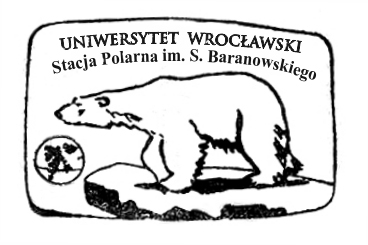 Stanisław Baranowski Polar Station of Wrocław University (South Spitsbergen)
Stanisław Baranowski Polar Station of Wrocław University (South Spitsbergen)
Stanisław Baranowski Polar Station of Wrocław University at Werenskiold glacier outwash plain has existed since 1971. It is the base of Wrocław University geographic expeditions. Climatological, glaciological, geomorphological and geological research based at the Station has been conducted by Wrocław University Institute of Geography and Regional Development at the Werenskiold glacier and in its vicinity since 1957, when it was begun within the International Geophysical Year (1957-1958).
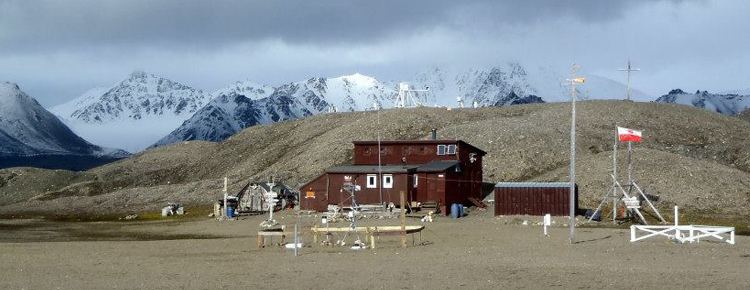
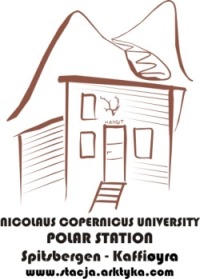 Nicolaus Copernicus University Polar Station, Kaffioyra (Spitsbergen)
Nicolaus Copernicus University Polar Station, Kaffioyra (Spitsbergen)
There were a number of reasons that determined the choice of this place. The most important ones are a large variety of the environment and close distance to glaciers which are the main object of research. The deep Hornbaek bay is in the Station’s immediate vicinity. It gives excellent shelter to ships and the possibility of loading and unloading an expedition safely during stormy weather. The Forland strait is free of ice already in mid-June. In the summer season pack ice does not create the slightest navigation difficulties. Small moraine lakes provide sufficient amount of fresh water during the polar summer. The attractiveness of the NCU Polar Station is even greater thanks to the relative proximity of NY Alesund, a settlement which is a big international research centre. The itinerary of small ships cruising between Longyearbyen and Ny Alesund goes through the Forland strait. One of the important advantages of NCU Polar Station localization is that it is situated beyond the borders of nature parks and reserves. This allows a relatively big amount of freedom in moving around and doing research.

 Calypsobyen Polar Station of Maria Curie Skłodowska University (Spitsbergen)
Calypsobyen Polar Station of Maria Curie Skłodowska University (Spitsbergen)
Na południowym brzegu fiordu Bellsund tuż u wylotu fiordu Recherche zlokalizowana jest stara osadza górnicza Calypsobyen. Miejsce to od 1984 roku jest bazą kolejnych wypraw naukowych Uniwersytetu Marii-Curie-Skłodowskiej w Lublinie. Głównym budynkiem stał się dawny barak mieszkalny, dogodnie zlokalizowany na plaży, u podnóża terasy o wysokości 20 m n.p.m. W sąsiedztwie znajdowało się niewielkie źródło zasilane wodami z tajania zmarzliny, funkcjonujące w okresie polarnego lata. Obszarem badań lubelskich wypraw na Spitsbergen jest NW część Ziemi Wedela Jarlsberga. O wyborze tego rejonu zadecydowało szereg czynników, przede wszystkim stopień znajomości środowiska przyrodniczego, który był znacznie słabszy niż obszarów położonych na południu (rejon Hornsundu) i północy (Nordenskiöld Land). Ponadto, duże znaczenie miało również zróżnicowanie warunków naturalnych, zwłaszcza obecność różnej wielkości lodowców stanowiących jeden z podstawowych obiektów badań naukowych, a także obszarów niezlodowaconych reprezentowanych przez grzbiety górskie, doliny różnej wielkości oraz równiny nadmorskie. Jedna z nich - Calypsostranda, o piaszczysto-żwirowej plaży i wybrzeżu bez szkierów, umożliwiała bezpieczny wyładunek ludzi i sprzętu. Również w przypadku wystąpienia złej pogody wyładunek był możliwy w osłoniętej i głębokiej zatoce Josephbukta.
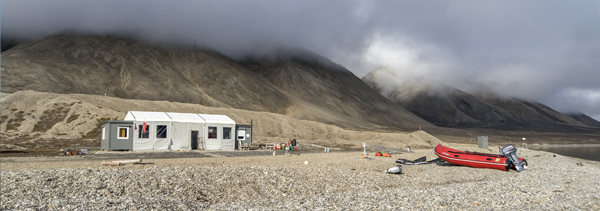
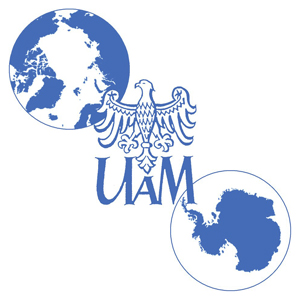 ‘Skottehytta’ – expedition base of Adam Mickiewicz University in Poznań (Petuniabukta, Spitsbergen)
‘Skottehytta’ – expedition base of Adam Mickiewicz University in Poznań (Petuniabukta, Spitsbergen)In 1984 Adam Mickiewicz University (UAM) began organizing its own independent research expeditions to Spitsbergen. The vicinity of Petunia Bay, situated in the middle part of the island, in the furthest north-west branch of Isfjord, was chosen as the study area, mostly for geological and geomorphic research. The reasons for the choice of this localization was the diversity of the natural environment, which was relatively little examined, the unique climate of this part of Spitsbergen with its features not as strongly affected by oceanic influences as the west coast, easy access from Svalbard - Longyearbyen and the possibility of using a house, built in the second decade of the 20th century for explorers and managed by the gubernatorial authorities, situated at the very shore near a calm anchorage. In the expeditions, taking place almost every year in the summer season in the 1980s and since the year 2000, geographers, geologists, biologists and chemists of UAM, but also representatives of other Polish universities (Gdańsk University, University of Silesia) and foreign institutions (from the Czech Republic, France, Germany, Norway, Russia) have worked together.




